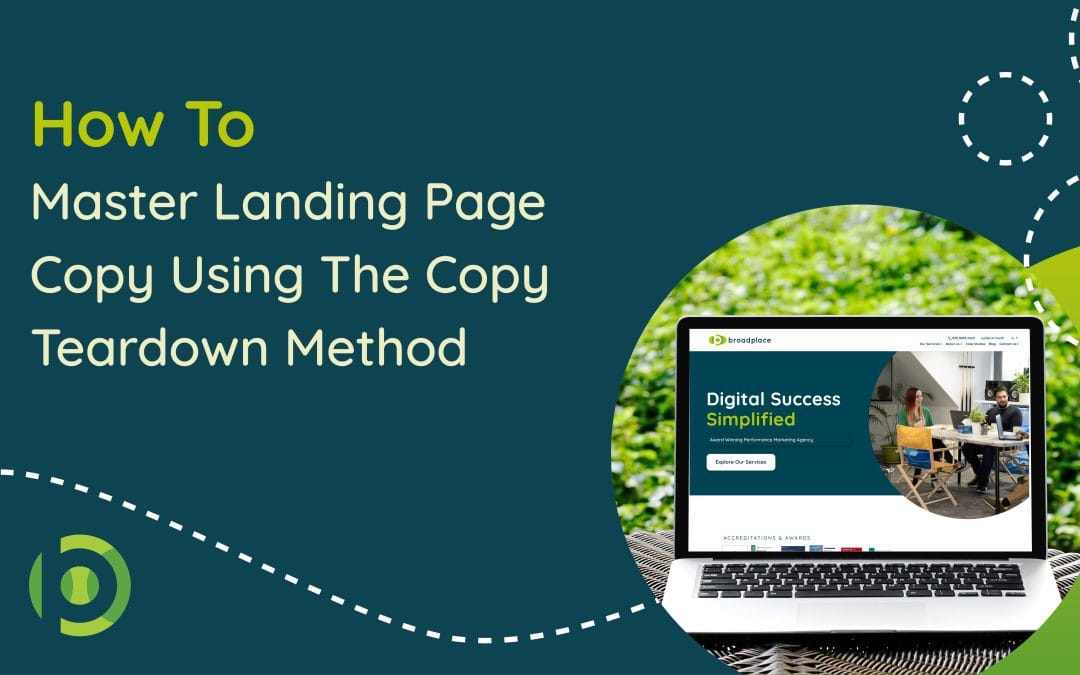Crafting high-converting landing pages isn’t just about what you say; it’s about how and why you say it. Effective copywriting is part psychology, part strategy, and part science. But how do you make sure your messaging resonates? That’s where a copy teardown comes in – a structured approach to analysing and fine-tuning your copy for maximum impact.
This blog explores what a copy teardown is, how it can transform your landing pages, and the proven frameworks that can help you optimise your content to drive conversions.
What is a Copy Teardown?
A copy teardown is like an audit for your copy. It’s a step-by-step method of breaking down each element of your page and applying persuasion-driven principles to make it more effective. Instead of guessing what might work, you take a structured, analytical approach to improve your messaging.
Why Conduct a Copy Teardown?
Here’s why it’s worth your time:
- Eliminate Guesswork: Replace intuition with proven principles for crafting persuasive content.
- Sharper Messaging: Create copy that resonates with your audience and drives action.
- Audience Alignment: Speak to your audience’s needs rather than focusing solely on what you want to say.
- Repeatable Process: Use it as a reliable framework for consistent, effective content creation.
Three Proven Frameworks for Analysing Your Copy
1. MECLABS Conversion Heuristic Formula
This framework simplifies the art of conversion with the formula:
C = 4M + 3V + 2(I – F) – 2A
Here’s what it all means:
- C (Conversion Probability): The likelihood of a user saying “yes” to your offering.
- M (Motivation): Align your messaging with what drives your users.
- V (Value Proposition): Highlight what makes your offer unique.
- I (Incentive): Offer benefits that offset any friction (e.g., discounts, free trials).
- F (Friction): Minimise hurdles in the conversion process (e.g., unclear CTAs, clunky forms).
- A (Anxiety): Address fears or uncertainties about your product/service.
The Conversion Sequence Heuristic ranks things in order of influence on your conversion rate, with “M” (Motivation) as the main element, followed by “V” (Value Proposition), “I” (Incentives), “F” (Friction), and “A” (Anxiety).
The numbers in front of the different elements of the heuristic indicate how much they impact the probability of conversion. The elements do not hold equal weight – the motivation of the user is the most important factor affecting conversion. The minus symbols (-F, -2A) are elements we want to remove in the conversion journey.
It helps you to answer the basics: What motivates your visitors? Where are they in the thought sequence? Where is your traffic coming from? What do they value? How do you present your value? Where are they getting stuck? What conclusions do they need to make before converting?
Understand your user’s motivations and remove the friction and anxiety, and you’re already halfway to better conversions.
2. Robert Cialdini’s Principles of Persuasion
Dr. Robert B. Cialdini is a renowned psychologist and expert in the science of influence and how to apply it ethically in business. Dr. Robert Cialdini’s timeless persuasion principles are vital tools for any copywriter:
- Social Proof: Highlight popularity or endorsements (e.g., testimonials, influencer reviews).
- Authority: Establish credibility through expertise or industry accreditations.
- Liking: Connect with your audience through relatable values or tone.
- Scarcity: Create urgency by emphasizing limited availability or time-sensitive offers.
- Reciprocity: Offer value first (e.g., free resources) to encourage conversions.
- Commitment & Consistency: Build trust incrementally (e.g., free trials leading to subscriptions).
- Unity: Foster a sense of belonging (e.g., highlighting shared goals or community).
3. Claude Hopkins’ Scientific Advertising
Claude Hopkins, the godfather of conversion copywriting, had three simple rules for effective copy: Be specific, Offer service, and Tell the full story. No vague fluff – just clear, actionable, and engaging copy.
- Be Specific: Replace vague claims with clear, detailed descriptions.
Example: Instead of saying, “Our product is efficient,” say, “Our tool saves 3 hours weekly with automated reporting.” - Offer Service: Position your product as a solution.
Example: “Tired of slow-loading websites? Our platform ensures a 99% speed boost.” - Tell the Full Story: Provide the context your audience needs to make an informed decision.
Example: Shift from “Improves conversions” to “Our tools improve your conversions by 27%, helping you achieve a better ROI.”
Applying the Copy Teardown
Start by creating a checklist of your conversion requirements derived from the principles just discussed (or make a copy of the template below). Then, go through your page and decide if each element has been well executed or if it needs improvement/more info.
From there, it’s just a matter of fixing what’s not working and keeping what is to improve your messaging using persuasive principles. It’ll also help you to get a better understanding of what the user is looking for and the kind of information they need to convert.

